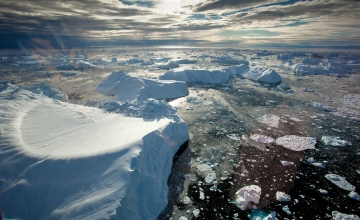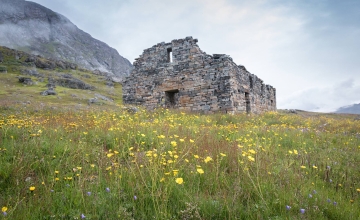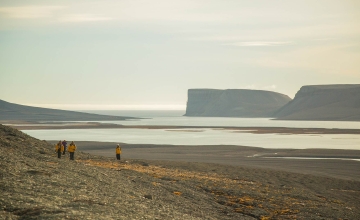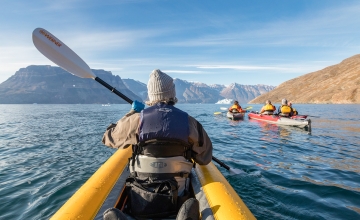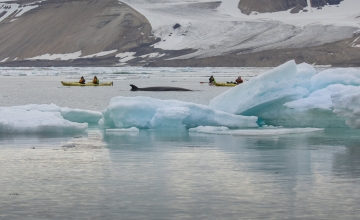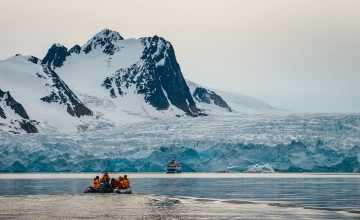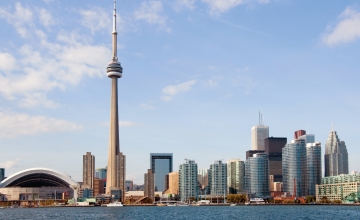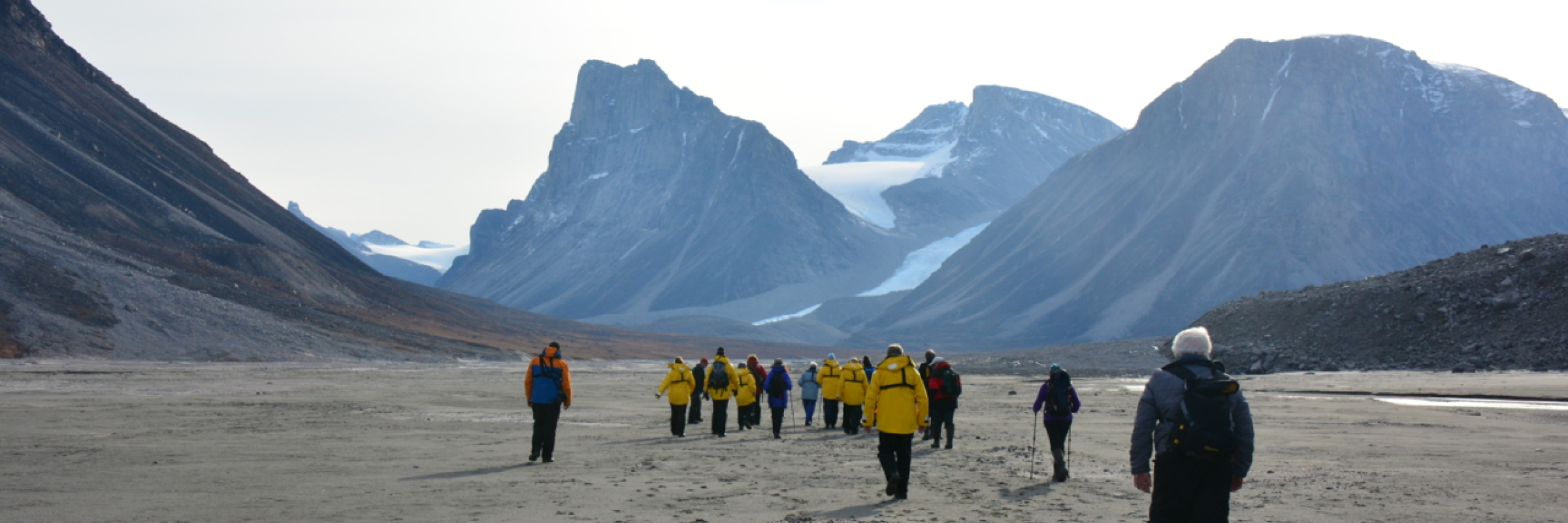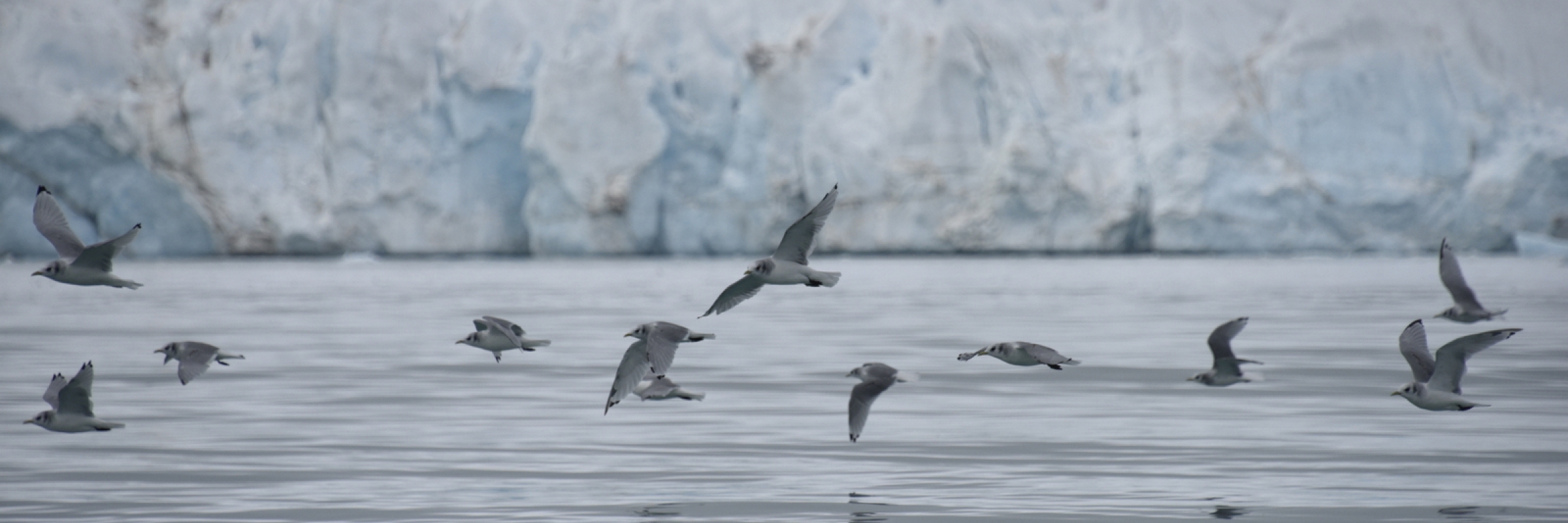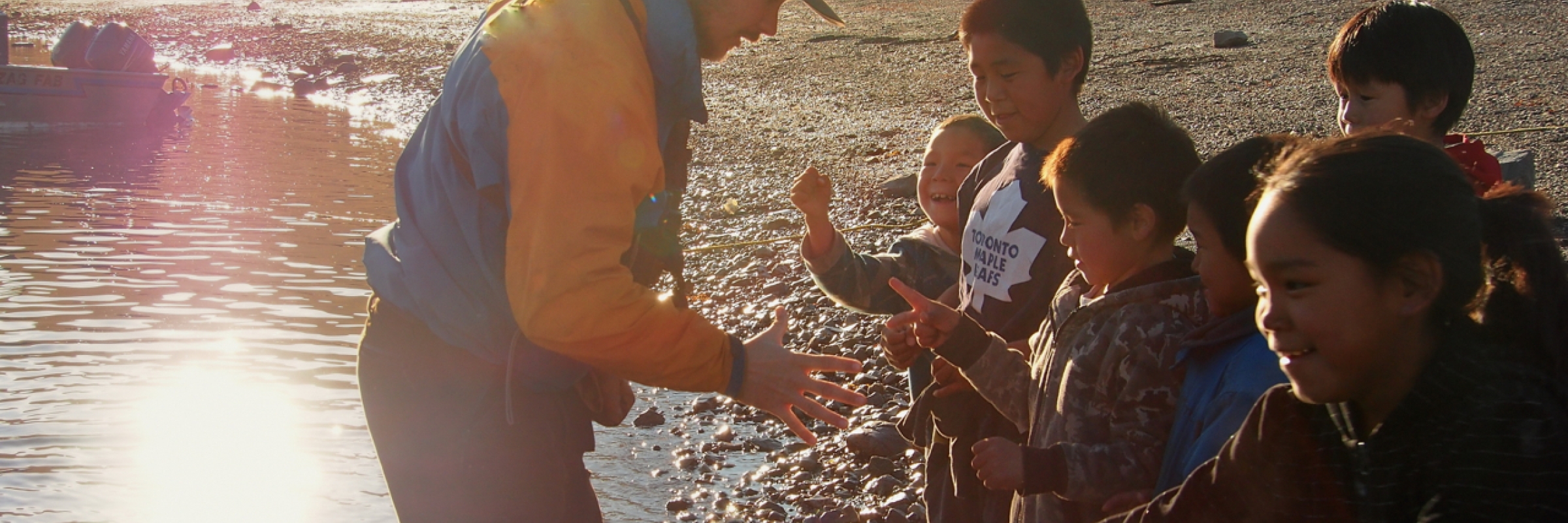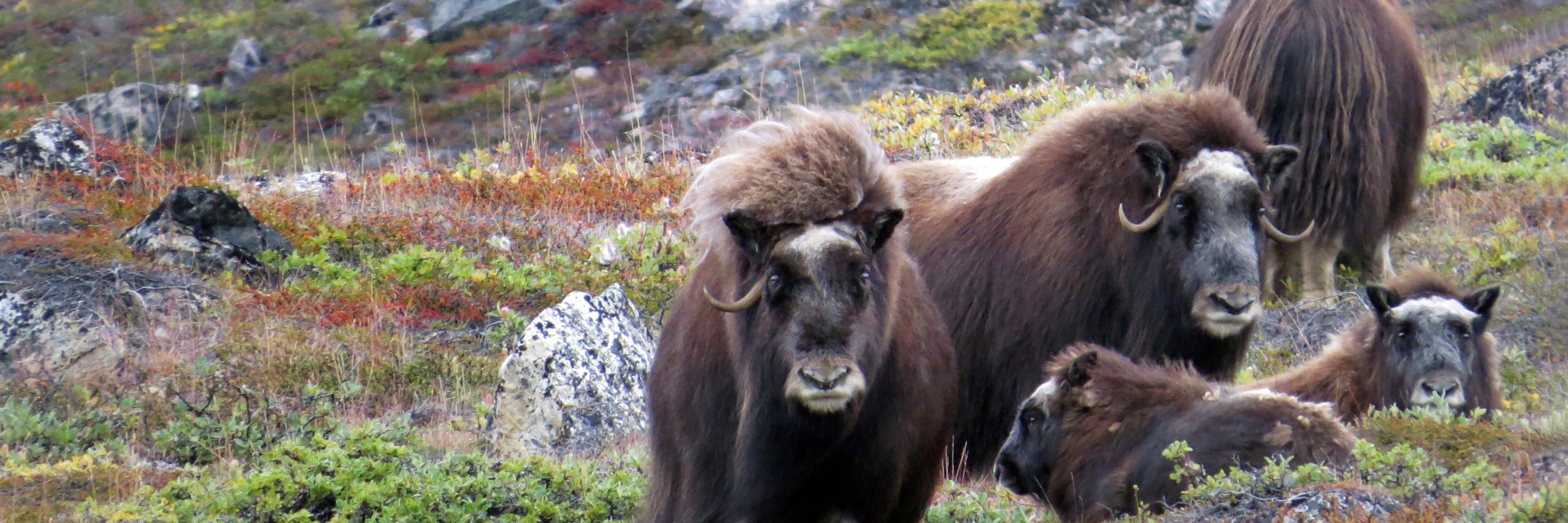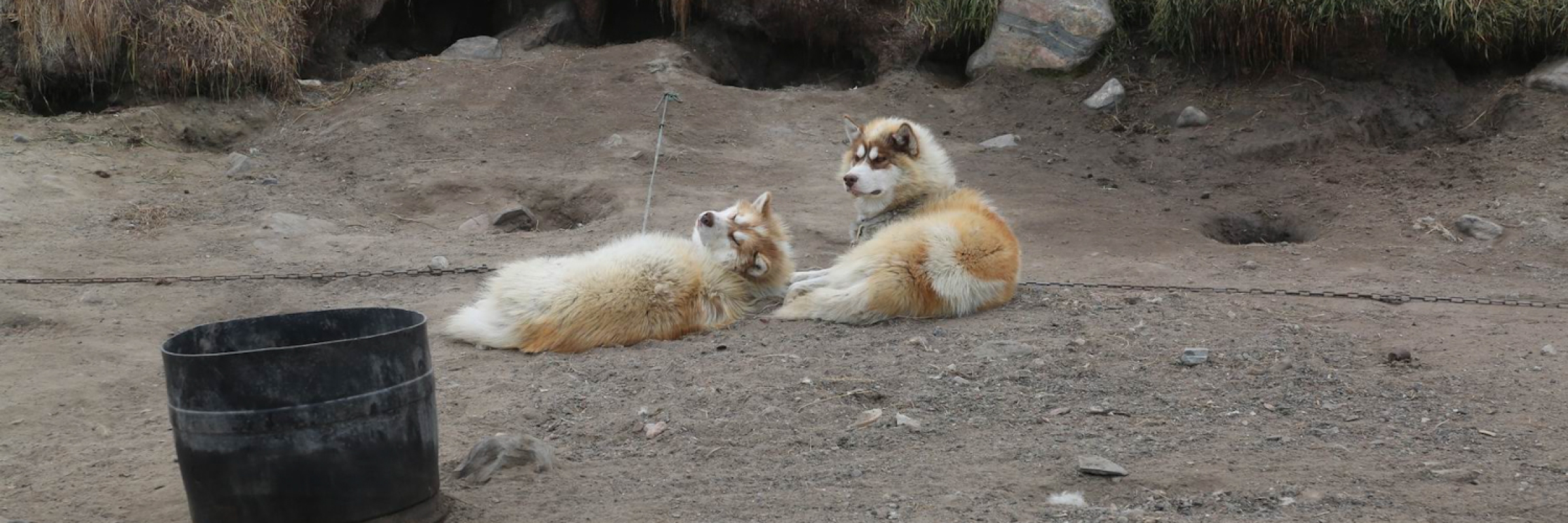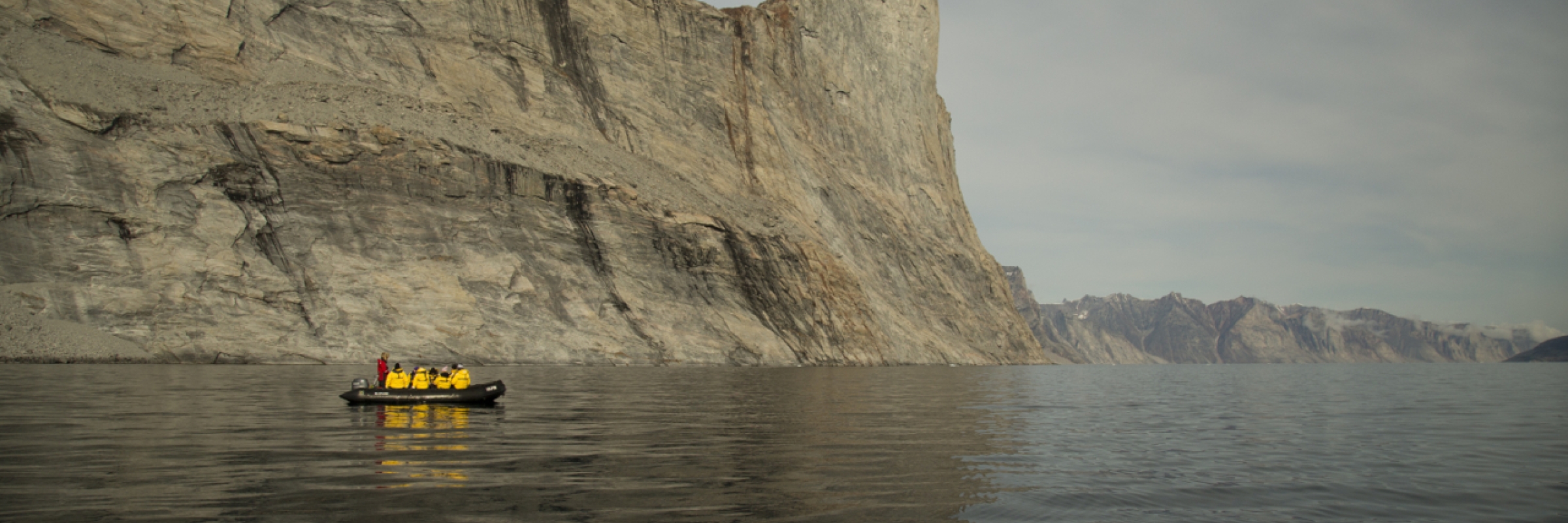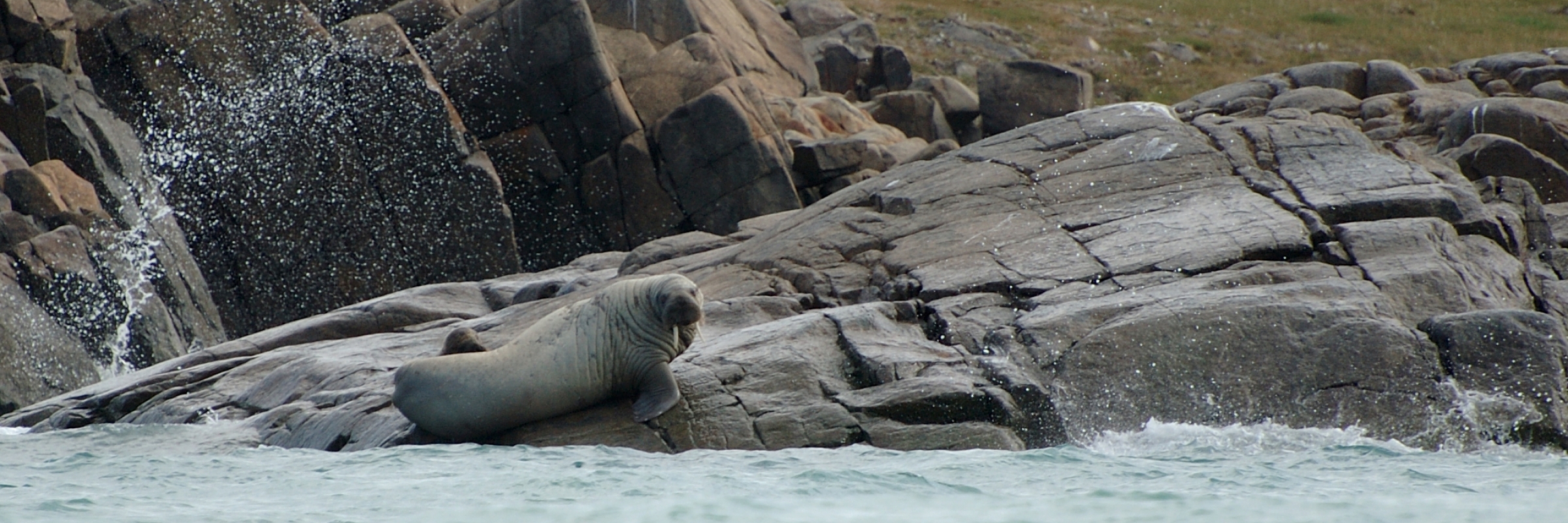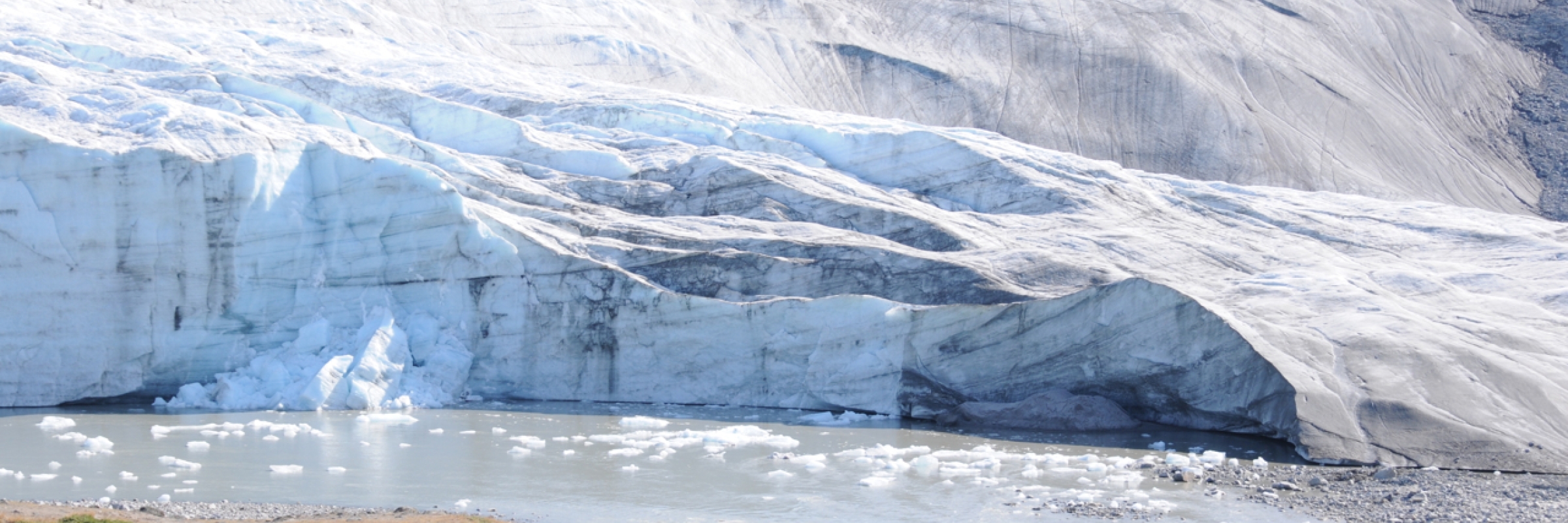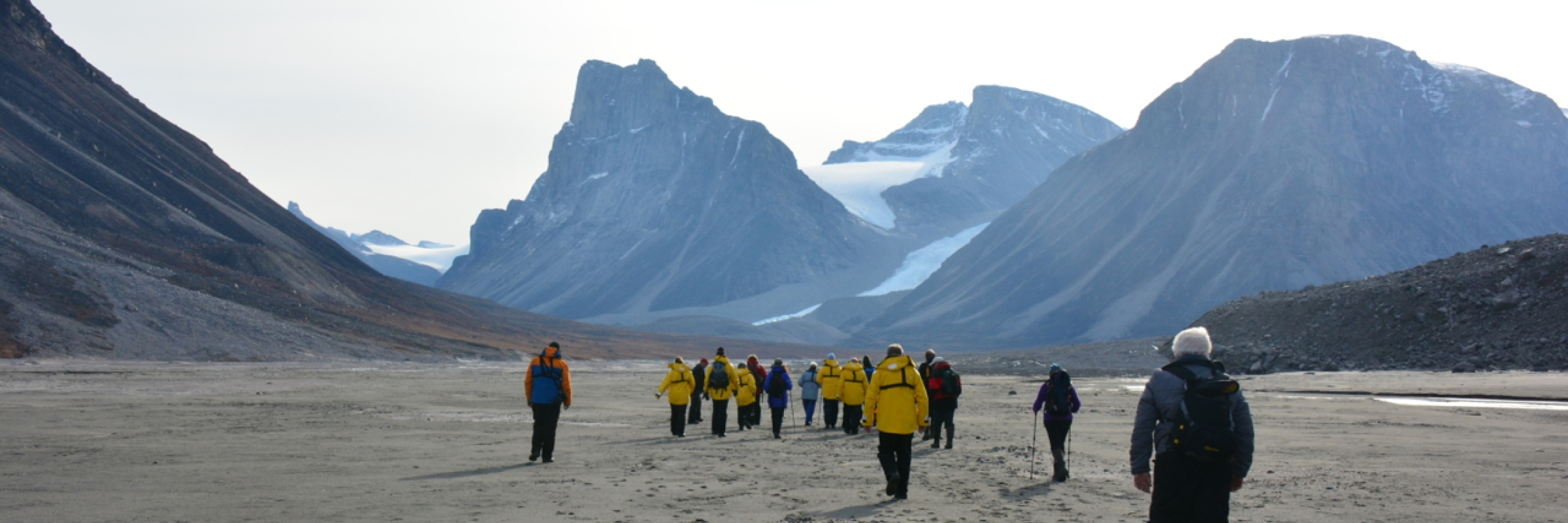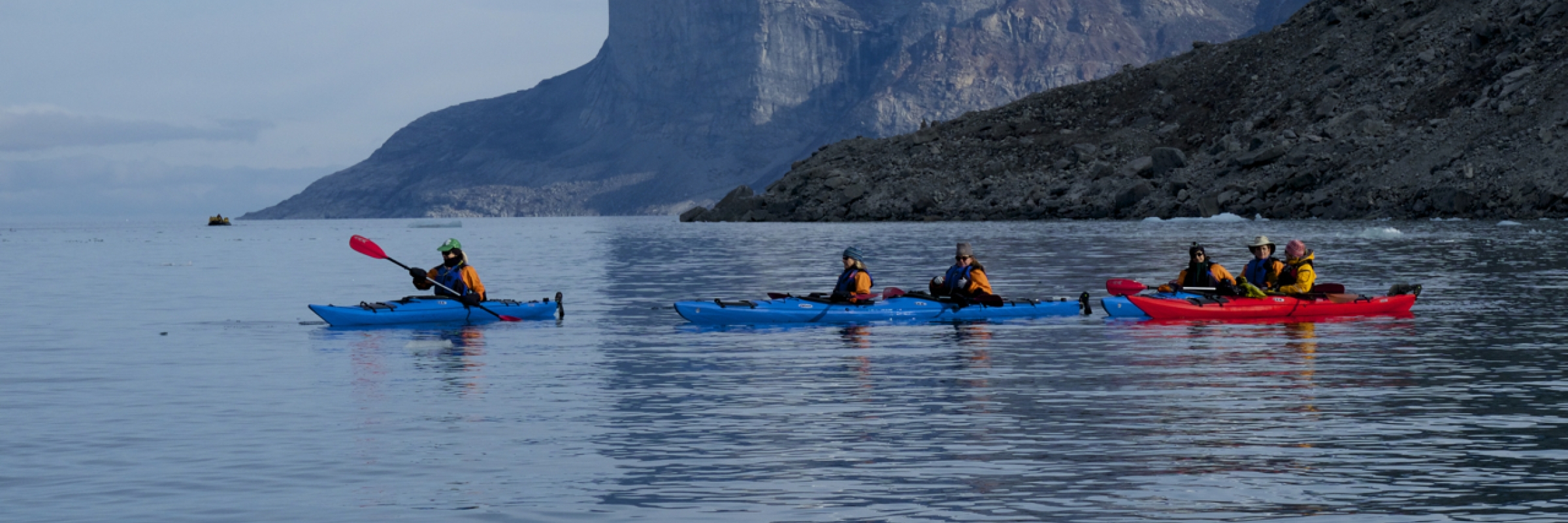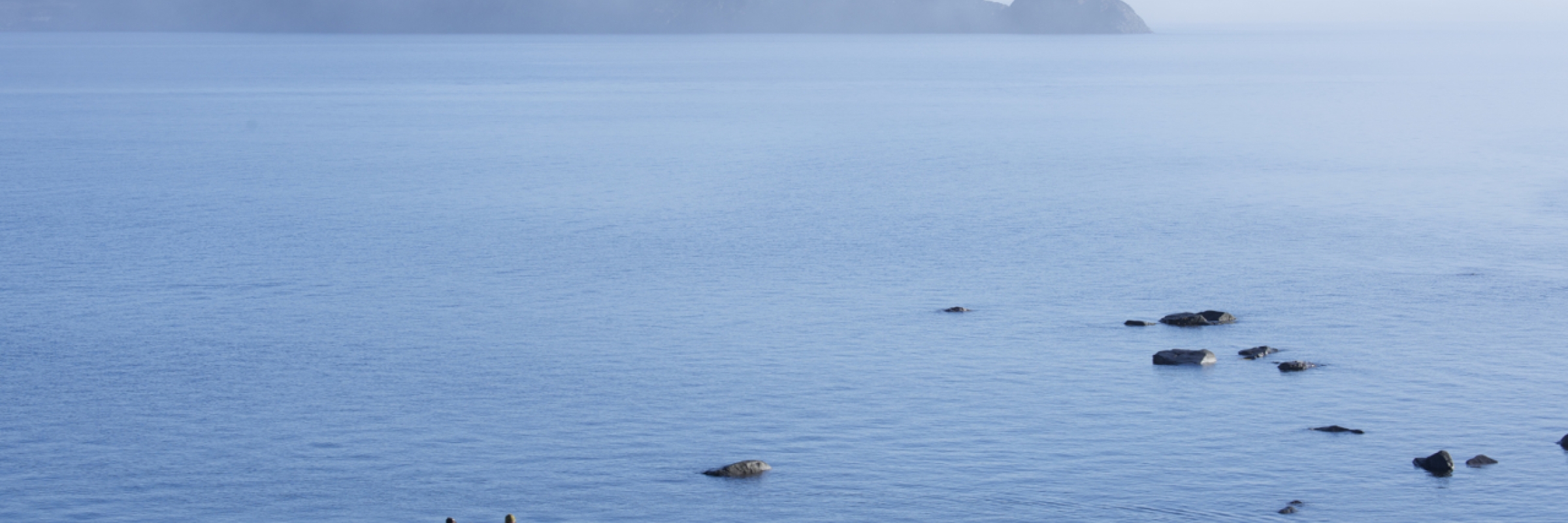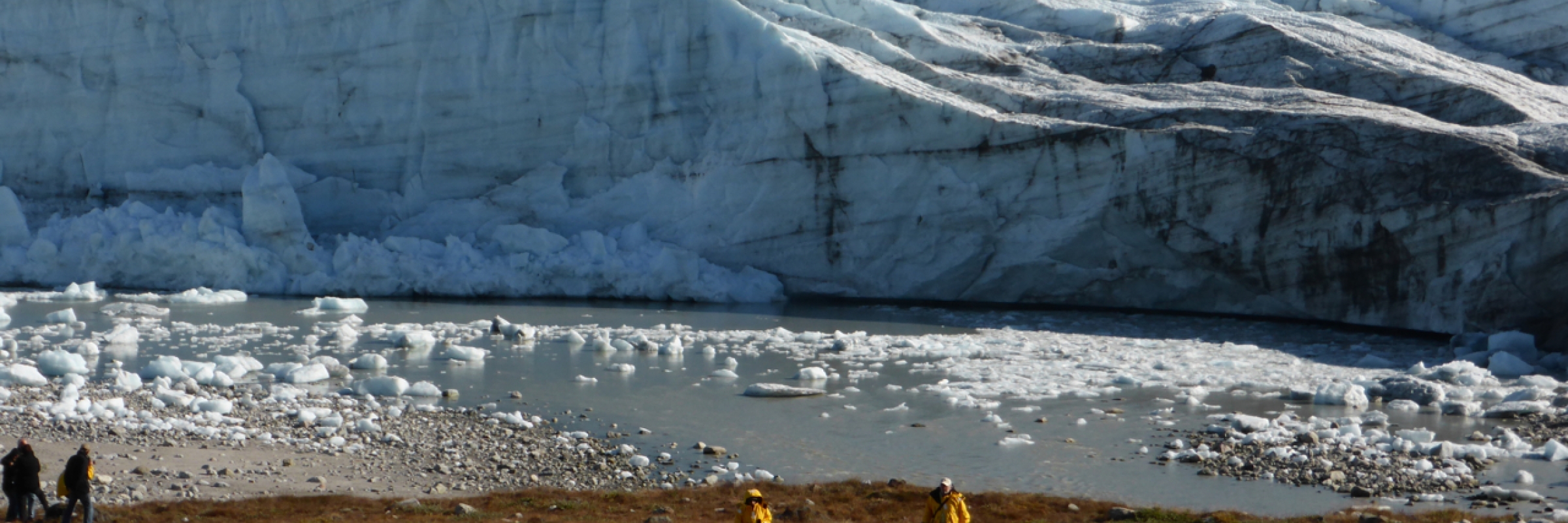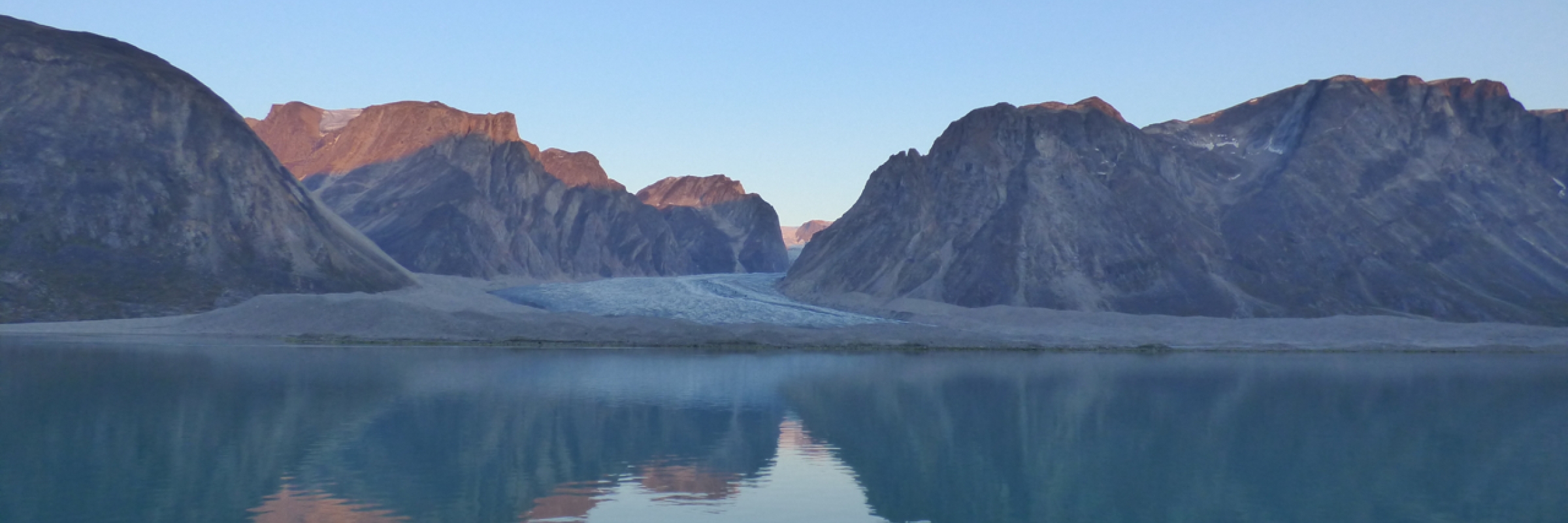Your Arctic expedition begins in Toronto. Explore this vibrant city on your own before spending the night enjoying the comfort and amenities of your designated hotel.
Northwest Passage: In the Footsteps of Franklin
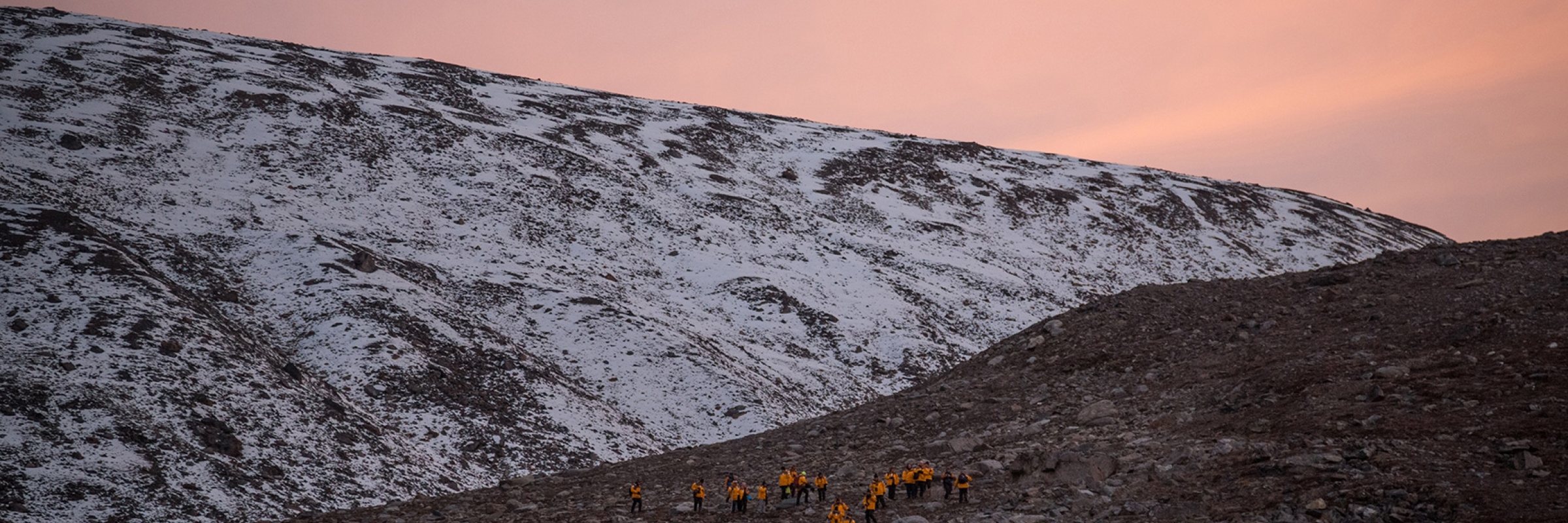
Winding your way through the icy channels of the legendary Northwest Passage is history brought to life. On this compelling 17-day journey aboard our game-changing new vessel Ultramarine, passengers retrace the steps of the intrepid Franklin Expedition, which left the shores of England in 1845 in search of the last unexplored section of the Northwest Passage—only to become permanently icebound. Its discovery more than a century and a half later was a much-celebrated moment in polar history.
On Ultramarine, guests benefit from two twin-engine helicopters that will provide spectacular aerial views of the Arctic landscape, the most extensive portfolio of adventure options in the industry, more outdoor wildlife viewing spaces than any other expedition ship its size, and 20 quick-launching Zodiacs to get you closer to ancient glaciers, dramatic fjords and towering icebergs. Explore colorful Greenlandic villages, and shop for traditional Inuit handicrafts. Hike the endless Arctic backdrop and marvel at the vast, colorful tundra. Keep your eyes peeled for the elusive and majestic creatures that make their home in this wilderness, such as whales, walrus, muskoxen and polar bears. Come aboard Ultramarine, follow in the footsteps of Franklin’s legendary Arctic voyage, and return home with memories to last a lifetime.
- Experience highlights of Greenland and the Canadian Arctic
- Explore colorful Greenlandic villages and shop for traditional Inuit handicrafts
- View iconic arctic wildlife, such as whales, walrus and muskoxen
- Hike the colorful tundra
- Cruise in a Zodiac to get up close to glaciers, fjords, icebergs and more
行程
Day 1 — Arrive in Toronto, Canada
Day 2 — Fly to Kangerlussuaq, Greenland and Embark
After breakfast, board your charter flight to Kangerlussuaq, a small community nestled deep inside a 118 mile (190 km) long fjord. Enjoy your first Zodiac ride as you’re transferred from shore to ship. Out on deck, take in your new surroundings before you set sail on your Arctic adventure.
Days 3 and 4 — Exploring West Greenland
Cruising around the remote regions of Greenland and the Canadian Arctic aboard Ultramarine, the newest ship in our fleet, you’ll navigate the same icy inlets, channels and bays that fascinated legendary explorers of long ago. Designed to give polar adventurers unprecedented access to the hardest to-reach places on the planet—and equipped with two onboard twin-engine helicopters for unparalleled access to areas only Quark Expeditions can bring you—this one-of-a-kind ship will take you beyond the familiar in polar exploration. Throughout your journey, your Expedition Team will keep an eye toward immersing you in the best the Arctic has to offer at the top of the world. Locals call Maniitsoq the Venice of Greenland, as it’s situated in an archipelago intersected by natural canals. Soaring, snow-capped mountains surround the small, rocky town, whose name means “the uneven place.” Playful humpback whales spend summer in the waters around here.
The Greenlandic capital of Nuuk is a haven for history and culture lovers. See for yourself the unique and thriving culture of contemporary Greenland that mingles the ancient with the modern in surprising and wonderful ways. Stroll down to the waterfront to see the Hans Egede Church and Hans Egede statue, named for the missionary who established the settlement in 1728. Marvel at the famous remains of 500-year-old fully dressed mummies, discovered under a rock outcrop in 1972 by two brothers out hunting, at the Greenland National Museum. The Nuuk Art Museum and Katuaq Culture Centre are also worth visiting.
Day 5 — At Sea
Say goodbye to Greenland’s shores as you traverse the Davis Strait in pursuit of the Canadian Arctic. Presentations byon-board experts will prepare you for the adventures that lie ahead.
Days 6 to 15 — Exploring Canada's High Arctic
Visit towering fjords, historical sites and Inuit communities as you follow in the footsteps of famous explorers from long ago in the Canadian High Arctic.
The picturesque Inuit hamlet of Pangnirtung, nicknamed the Switzerland of the Arctic, is nestled beneath the jagged peaks of Mount Duval. An artist’s hub, Pang is renowned for its traditional Inuit arts and crafts, especially lithographs and intricate tapestries. At the Uqqurmiut Centre for Arts & Crafts, watch craftspeople in the tapestry studio if they’re working and pick up a limited-edition print. A must for visitors, a colorful Pang hat will keep you warm during the remainder of your Arctic voyage. You might visit nearby Kekerten, an uninhabited island that was a major whaling destination in the 1800s.
At the southern tip of the Cumberland Sound, Cape Mercy was named by British explorer John Davis (yes, he of the Davis Strait), who sailed through it in 1585. This is the site of an old Distant Early Warning Line installation, dating back to the Cold War. These and many other stations were set up to detect Soviet bombers. It’s an ideal spot to go ashore for a hike.
As icebergs travel down the Davis Strait, they’re naturally trapped at Qikiqtarjuaq (formerly known as Broughton Island). The icy waters here are sometimes also home to beluga and bowhead whales, and ring and harp seals. A hike up to the hilltop inuksuk rewards with spectacular views of the community. Inuksuks are stone figures or cairns that traditionally call attention to the location for navigation, abundant harvesting or spiritual significance.
Cruising further north along the mountainous east shore of Baffin Island, we’ll approach Isabella Bay, an important summer and fall feeding area for the largest concentration of bowhead whales in Canada. Bowheads are a truly a remarkable arctic leviathan that research has revealed may live more than 200 years of age - the oldest mammal.
At the northern tip of Baffin Island, near the eastern entrance to the Northwest Passage, is the Inuit hamlet of Pond Inlet, surrounded by scenic mountains, fjords, glaciers and icebergs. Many in the community still follow a nomadic lifestyle and hunt for their food.
At the top of Baffin Island sits Lancaster Sound, a true arctic oasis. Known by the Inuit and their predecessors for thousands of years, this channel and the surrounding lands are extremely rich in wildlife and history, both indigenous and European.
The area around Lancaster Sound affords several hiking opportunities. At Dundas Harbour, on Devon Island, you’ll visit an abandoned beachside outpost of the Royal Canadian Mounted Police. At nearby Croker Bay, cruise in a Zodiac (at a safe distance) along the face of an actively calving glacier. Your Expedition Team will also keep its eyes peeled for walrus that are known to visit the bay. Farther west, some of the best ancient Thule remains in the Arctic are at Radstock Bay, beside the soaring Caswell Towers.
At the western end of Devon Island, the windswept Beechey Island is steeped in history. Named after famed British explorer Frederick William Beechey, it’s a Canadian National Historic Site. You’ll visit the small marked graves of three crew members who died during Sir John Franklin’s tragic 1845–46 expedition. Over 150 years later, Roald Amundsen
landed here in 1903, during the first successful voyage by ship through the Northwest Passage.
Sailing down the east coast of Somerset Island, you may be fortunate to spot beluga whales and if you’re very fortunate, narwhals, as they feed at Creswell Bay. An Important Bird Area, the bay also attracts such species as black-bellied plovers, king eiders and white-rumped sandpipers. You’ll also have time to explore Fort Ross, where the Hudson’s Bay Company established a now abandoned trading post in 1937. At the midpoint of the Bellot Strait, the narrow channel that separates Somerset Island from mainland North America, you’ll reach the northernmost area of the continental landmass, Zenith Point.
Day 16 — Disembark in Resolute, Canada and Fly to Toronto
After disembarking in Resolute, you’ll be transferred to your charter flight to Toronto, where you’ll spend the night at your included hotel.
Day 17 — Depart Toronto
Today, make your way to the airport to catch your homeward flights, or spend the day exploring this fascinating city.
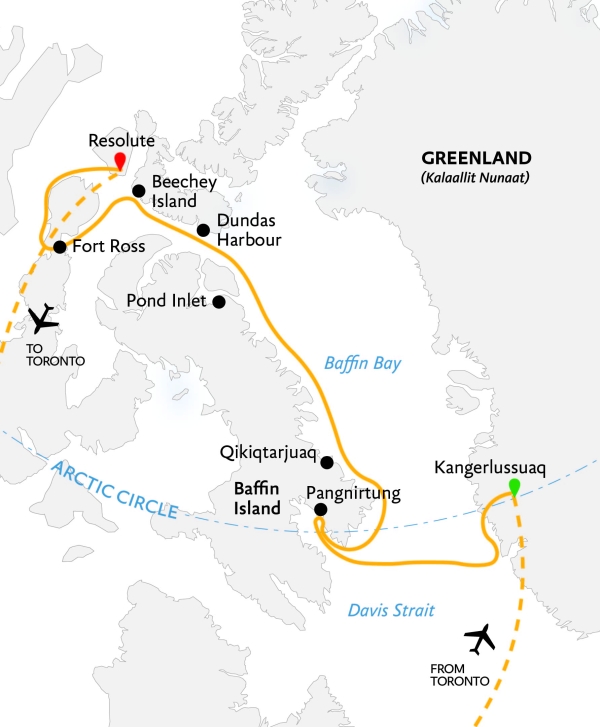
Day 1 — Arrive in Toronto, Canada
Your Arctic expedition begins in Toronto. Explore this vibrant city on your own before spending the night enjoying the comfort and amenities of your designated hotel.
Day 2 — Fly to Kangerlussuaq, Greenland and Embark
After breakfast, board your charter flight to Kangerlussuaq, a small community nestled deep inside a 118 mile (190 km) long fjord. Enjoy your first Zodiac ride as you’re transferred from shore to ship. Out on deck, take in your new surroundings before you set sail on your Arctic adventure.
Days 3 and 4 — Exploring West Greenland
Cruising around the remote regions of Greenland and the Canadian Arctic aboard Ultramarine, the newest ship in our fleet, you’ll navigate the same icy inlets, channels and bays that fascinated legendary explorers of long ago. Designed to give polar adventurers unprecedented access to the hardest-to-reach places on the planet—and equipped with two onboard twin-engine helicopters for unparalleled access to areas only Quark Expeditions can bring you—this one-of-a-kind ship will take you beyond the familiar in polar exploration. Throughout your journey, your Expedition Team will keep an eye toward immersing you in the best the Arctic has to offer at the top of the world. Locals call Maniitsoq the Venice of Greenland, as it’s situated in an archipelago intersected by natural canals. Soaring, snow-capped mountains surround the small, rocky town, whose name means “the uneven place.” Playful humpback whales spend summer in the waters around here.
The Greenlandic capital of Nuuk is a haven for history and culture lovers. See for yourself the unique and thriving culture of contemporary Greenland that mingles the ancient with the modern in surprising and wonderful ways. Stroll down to the waterfront to see the Hans Egede Church and Hans Egede statue, named for the missionary who established the settlement in 1728. Marvel at the famous remains of 500-year-old fully dressed mummies, discovered under a rock outcrop in 1972 by two brothers out hunting, at the Greenland National Museum. The Nuuk Art Museum and Katuaq Culture Centre are also worth visiting.
Day 5 — Cruising
Say goodbye to Greenland’s shores as you traverse the Davis Strait in pursuit of the Canadian Arctic. Presentations by on-board experts will prepare you for the adventures that lie ahead.
Days 6 to 15 — Exploring Canada's High Arctic
Visit towering fjords, historical sites and Inuit communities as you follow in the footsteps of famous explorers from long ago in the Canadian High Arctic.
The picturesque Inuit hamlet of Pangnirtung is nestled beneath the jagged peaks of Mount Duval. An artist’s hub, Pang is renowned for its traditional Inuit arts and crafts, especially lithographs and intricate tapestries. At the Uqqurmiut Centre for Arts & Crafts, watch craftspeople in the tapestry studio if they’re working and pick up a limited-edition print. A must for visitors, a colorful Pang hat will keep you warm during the remainder of your Arctic voyage. You might visit nearby Kekerten, an uninhabited island that was a major whaling destination in the 1800s.
At the southern tip of the Cumberland Sound, Cape Mercy was named by British explorer John Davis (yes, he of the Davis Strait), who sailed through it in 1585. This is the site of an old Distant Early Warning Line installation, dating back to the Cold War. These and many other stations were set up to detect Soviet bombers. It’s an ideal spot to go ashore for a hike.
As icebergs travel down the Davis Strait, they’re naturally trapped at Qikiqtarjuaq (formerly known as Broughton Island). The icy waters here are also home to ring and harp seals. A hike up to the hilltop inuksuk rewards with spectacular views of the community. Inuksuks are stone figures or cairns that traditionally call attention to the location for navigation, abundant harvesting or spiritual significance.
Cruising further north along the mountainous east shore of Baffin Island, we’ll approach Isabella Bay, an important summer and fall feeding area for the largest concentration of bowhead whales in Canada. Bowheads are a truly a remarkable arctic leviathan that research has revealed may live more than 200 years of age - the oldest mammal.
At the northern tip of Baffin Island, near the eastern entrance to the Northwest Passage, is the Inuit hamlet of Pond Inlet, surrounded by scenic mountains, fjords, glaciers and icebergs. Many in the community still follow a nomadic lifestyle and hunt for their food.
At the top of Baffin Island sits Lancaster Sound, a true arctic oasis. Known by the Inuit and their predecessors for thousands of years, this channel and the surrounding lands are extremely rich in wildlife and history, both indigenous and European.
The area around Lancaster Sound affords several hiking opportunities. At Dundas Harbour, on Devon Island, you’ll visit an abandoned beachside outpost of the Royal Canadian Mounted Police. At nearby Croker Bay, cruise in a Zodiac (at a safe distance) along the face of an actively calving glacier. Your Expedition Team will also keep its eyes peeled for walrus that are known to visit the bay. Farther west, some of the best ancient Thule remains in the Arctic are at Radstock Bay, beside the soaring Caswell Towers.
At the western end of Devon Island, the windswept Beechey Island is steeped in history. Named after famed British explorer Frederick William Beechey, it’s a Canadian National Historic Site. You’ll visit the small marked graves of three crew members who died during Sir John Franklin’s tragic 1845–46 expedition. Over 150 years later, Roald Amundsen landed here in 1903, during the first successful voyage by ship through the Northwest Passage.
Sailing down the east coast of Somerset Island, you may be fortunate to spot beluga whales and if you’re very fortunate, narwhals, as they feed at Creswell Bay.
An Important Bird Area, the bay also attracts such species as black-bellied plovers, king eiders and white-rumped sandpipers. You’ll also have time to explore Fort Ross, where the Hudson’s Bay Company established a now-abandoned trading post in 1937. At the midpoint of the Bellot Strait, the narrow channel that separates Somerset Island from mainland North America, you’ll reach the northernmost area of the continental landmass, Zenith Point.
Day 16 — Disembark in Resolute, Canada and Fly to Toronto
After disembarking in Resolute, you’ll be transferred to your charter flight to Toronto, where you’ll spend the night at your included hotel.
Day 17 — Depart Toronto
Today, make your way to the airport to catch your homeward flights, or spend the day exploring this fascinating city.

